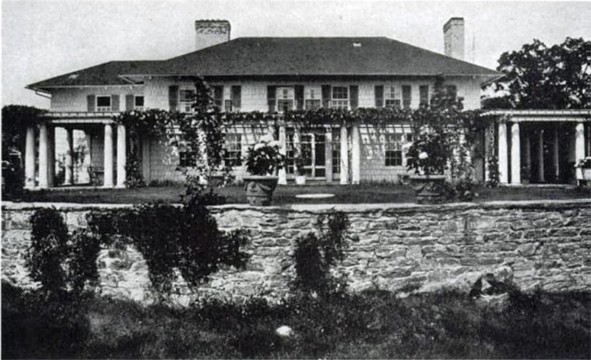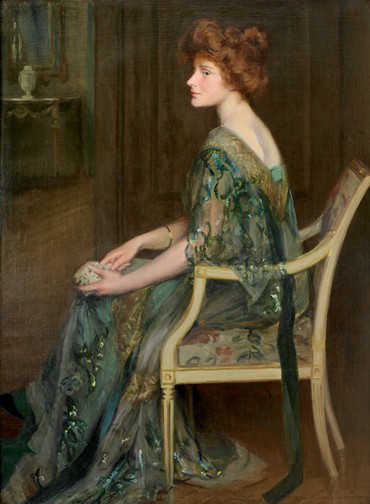Anna Parkman Osgood, 1864 – 1935
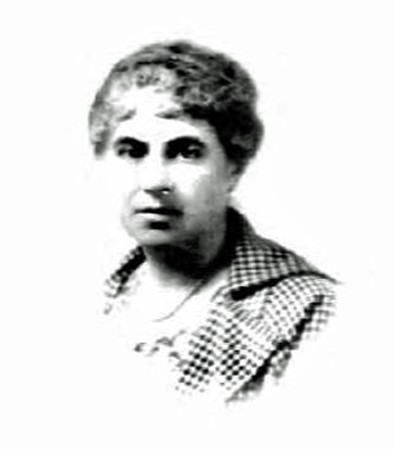
Anna Parkman Osgood is a little-known painter who studied in Paris in the late 1890s and became a portraitist. She was born to Hannah Parkman Newell and Edward Shelburne Osgood on July 12, 1864 in Massachusetts. Anna graduated from Cambridge High School in 1883.
The only indication that Osgood was affiliated with the American Girls’ Art Club comes from the 1896 Indicateur guide to art in Paris, where she was listed as one of the residents at 4 rue de Chevreuse, alongside Willie Betty Newman, Letta Crapo Smith, and others.
Osgood exhibited a painting at the 1897 Salon des Beaux-Arts depicting the interior of a church, but her address was listed in the Salon catalogue as 152 rue de Vaugirard, where she had her studio and where her friend, Lucy Parkman Trowbridge, also had her own studio (De Forest 483). In the summer of 1897, Osgood was connected to a serious tragedy that shocked the American art student community of Paris: the apparent suicide of fellow Girls’ Art Club affiliate and painter, Gertrude Weil, who resided at 117 rue Notre-Dame-des-Champs. In a comprehensive and sometimes salacious article detailing the mystery surrounding Weil’s drowning in the Seine, the New York Herald European edition reported that Weil and a “Miss Osgood went to Chartres together on a bicycle trip only a short time before she died” (June 23, 1897, 3).
It was perhaps this tragic event that led Osgood to return to the United States. The Boston Sunday Post on December 5, 1897 mentioned her return to Boston in its "In Society" column:
Miss Anna Parkman Osgood, who made a wheeling tour through Europe with Miss Stackpole two years ago, has returned to town and taken a studio on Mt. Vernon street. Miss Osgood has been studying art in Paris with Lazar with marked success, her Salon pictures having been greatly admired (16).
"Miss Stackpole" probably refers to artist Alice Stackpole, who was born and raised in Boston, while the teacher "Lazar" was actually Charles Augustus C. Lasar (1856-1936), a popular expatriate art instructor in Montparnasse. Lasar taught landscape painting en plein air and travelled with his students, many of them women, through the French countryside, and to Belgium, Holland, and England.
According to another 1897 article, Anna wasted no time in exhibiting her work: "Miss Anna P. Osgood has had a very attractive exhibition of English and French pictures at her studio on Mount Vernon Street, Boston, during the past week and has made several sales" (Cambridge Tribune 5). She also held private showings at 56 Mt. Vernon street every Tuesday afternoon (Boston Sunday Post, December 19, 1897, 24).

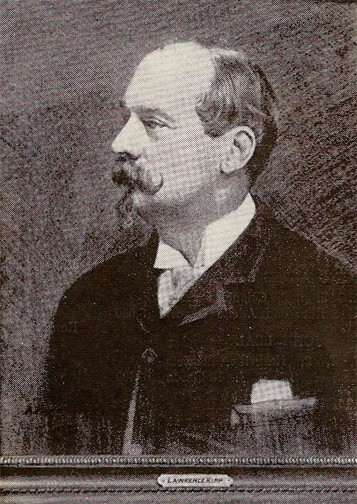
She is next listed in volume 3 of American Art Annual, 1900-1901 as a painter residing at 30 East 57th Street in New York (52). The Annual Report of the Museum of Fine Arts, Boston lists three oil paintings by Osgood (without specifying their titles) as contributions to the loan exhibitions of 1901 (129).
Interestingly, a brief article in a February 16, 1900 issue of Turf, Field and Farm (a publication dedicated to horses and husbandry) reports that Osgood had been commissioned to create a "large crayon portrait of the late Col. Lawrence Kip" for the clubhouse of the Suburban Riding and Driving Club. Kip founded the Club at the Seaman mansion in Inwood, a Manhattan playground for the ultra-wealthy in the early part of the 20th century (243). The progressive club, which allowed women not only to join as members but to participate in horse races, was a veritable who's who of New York's rich, powerful families. It closed in 1906 and Osgood's connection to the club is unclear. Her portrait of Col. Kip is in the Patrons of the Turf wing of Saratoga's National Museum of Racing (Blood Horse).
Osgood commissioned a luxurious Connecticut estate, Blendon Hall, created by the prominent artist, landscape designer, and domestic architect Charles A. Platt and completed ca. 1902. Two architectural drawings by Platt for Blendon Hall are held in the Avery Drawings & Archives collection at Columbia University. Incidentally, Platt had lived in Paris ca. 1885-1900, where he studied at the Académie Julian and exhibited at the Salon des artistes français of 1885. He also received a bronze medal for his painting "Matin sur le Loing" at the Exposition universelle of 1900.
On September 23, 1905, Anna Parkman Osgood married Frederic S. Culver (varied spellings, Fredrick or Frederic F.). The 1910 United States Federal Census for Lyme, Connecticut identifies him as a self-employed lawyer married to Anna P. Culver, artist, living on a farm. In 1923, he became Justice of the Peace in Lyme, Connecticut. The couple never had children.
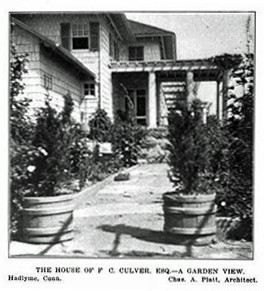

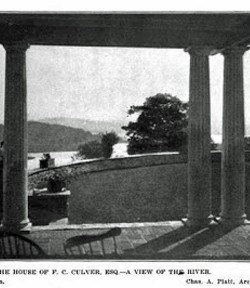
We lose track of Osgood's artwork after she married, though it seems that she still moved in artistic circles. A New York Times article includes the Culvers among the prominent guests at the Manhattan studio of Mary Helen Carlisle, a British artist who had lived in Paris between 1890 and 1895 and had attended the Académie Julian. Newspaper articles also report that the Culvers traveled to England, Italy, and France; they are listed, for example, among the passengers who sailed on the Carpathia to the Mediterranean in April 1909 (Herald, April 2) and on the Ivernia headed for Trieste in 1913 (New York Times, April 5).
Osgood must have continued to paint since "Woman in Green," is thought to have been completed ca. 1912. Now in a private collection, it appears to be one of two surviving paintings by Osgood. The second is "Choir Boys" (see below), originally part of the permanent collection at Bowdoin College Museum of Art. According to Elizabeth Humphrey, Curatorial Assistant and Manager of Student Programs of the Museum, it was deaccessioned in March 2005 and sold to a private collection through Northeast Auctions in November 2005. Humphrey has stated that Osgood's painting was modeled after an unidentified work by Enoch Wood Perry, a Boston painter who had studied in various European countries between 1852 and 1858.
Frederic Culver died on November 5, 1923. Several years later, in the 1930 United States Federal Census, Osgood is identified as a guest in a private home in Santa Barbara, California, and her occupation is listed as interior decorator.
When Osgood died in New York City at the age of 71, a brief obituary appeared in the March 20, 1935 issue of The New York Times. It described her as a patron of many arts groups and a member of New York’s women-only Cosmopolitan Club. Osgood lived near the club at 131 East 66th Street, where she and her husband had resided for several years. Her brother, Robert Treadwell Osgood, is acknowledged in the obituary as living in Paris. Ordained at the Andover Theological Seminary in 1891, he served as pastor of the Hadlyme Congregational Church beginning in 1903. He married a French woman at the age of 63 and died in Valenciennes, France in 1953.
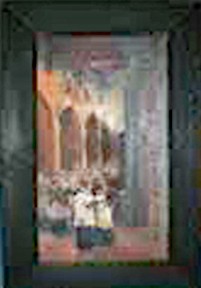
Sources
- American Art Annual 1900-1901, edited by Florence N. Levy. Vol. 3, Boston: Noyes, Platt & Company, 1900.
- AncestryLibrary.com (accessed through Columbia University's subscription).
- By Commercial Cable to the Herald. “Departures for Europe.” The New York Herald European edition, April 2, 1909, p. 1. Gallica.
- "Carrying off the Honors." Boston Daily Globe, June 26, 1883, p. 4. NewpaperArchives.com.
- De Forest, Katharine, "Our Paris Letter." Harper's Bazaar, vol. 30, no. 24, June 12, 1897, p. 483. ProQuest.
- Ferguson, Cheryl Caldwell. Highland Park and River Oaks: The Origins of Garden Suburban Community Planning in Texas. University of Texas Press, 2014, pp. 22-25.
- "In Society." Boston Sunday Post, December 05, 1897, p. 16. NewspaperArchive.com
- "In Society." Boston Sunday Post, December 19, 1897, p. 24. NewspapersArchive.com
- “The Latest Paris Mystery.” The New York Herald European edition, June 23, 1897, p. 3. Gallica.
- Longstreth, Richard. On the Edge of the World: Four Architects in San Francisco at the Turn of the Century. University of California Press, 1998, p. 36
- "Married." The New York Times, September 30, 1905, p. 9.
- “Mrs. Frederic F. Culver.” The New York Times, March 20, 1935, p. 21.
- "Old Cambridge." Cambridge Tribune, December 11, 1897, p. 5. NewspaperArchive.com.
- "Patrons of the Turf." The Blood Horse, July 20, 1963, p. 290.
- "Reception for Mme Liza Lehmann." The New York Times, January 8, 1910, p. 9.
- "Sailing for Europe." The New York Times, April 5, 1913, p. 13.
- Special to the Herald. “Majestic, Loaded with Passengers, Held Eight Hours Off Coast in Fog.” The New York Herald European edition, July 15, 1922, p. 4. Gallica.
- Trustees of the Museum of Fine Arts. “Contributions to the Loan Exhibitions for the Year 1901.” Twenty-Sixth Annual Report, for the year ending December 31, 1901. Boston: Alfred Mudge & Son, Printers, 1902, p. 129.
- Untitled article. Turf, Field & Farm, February 16, 1900, p. 243. Google Books.
